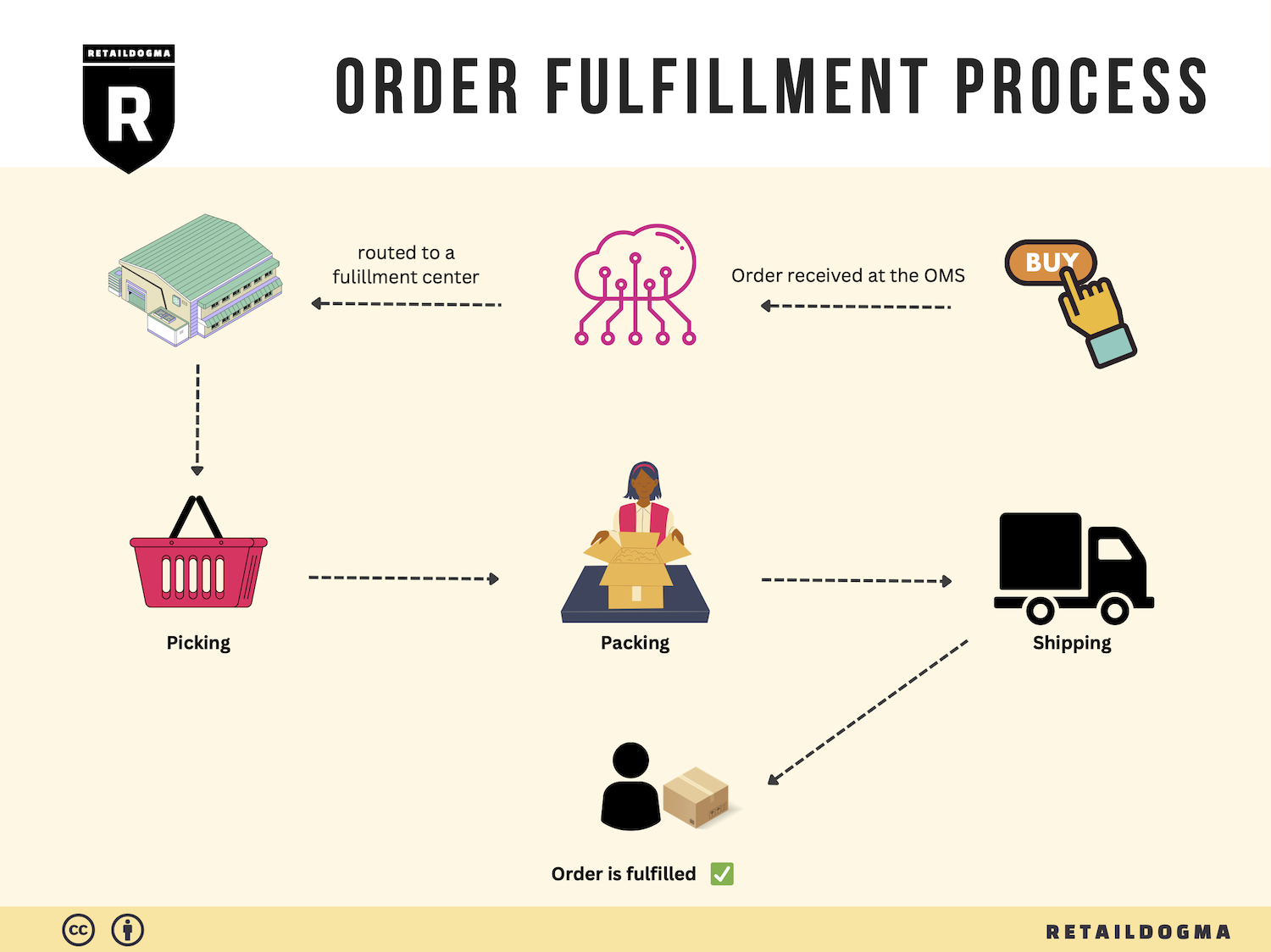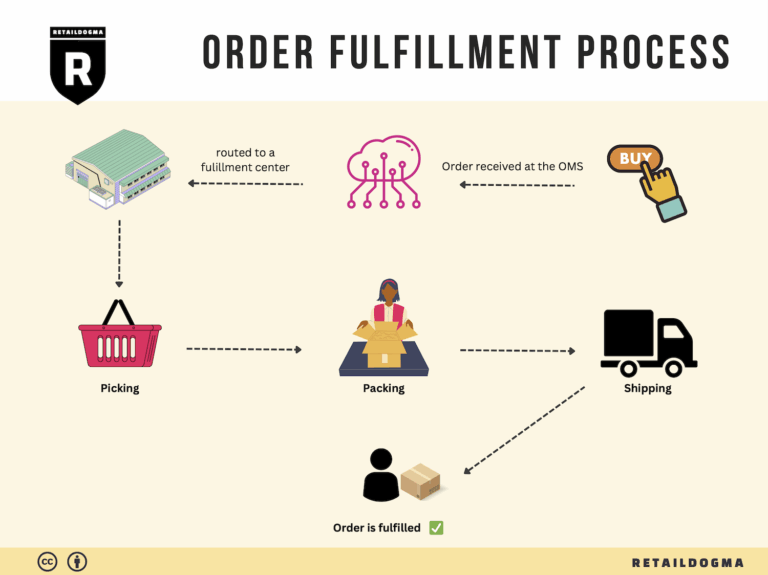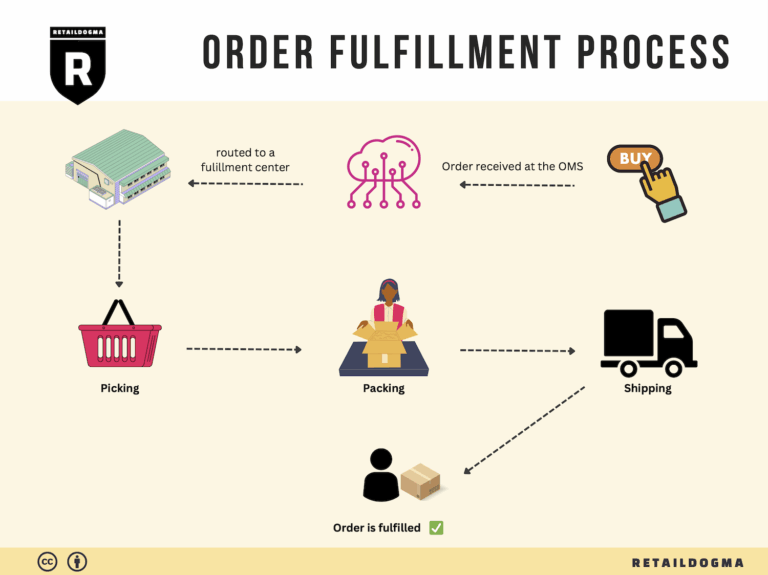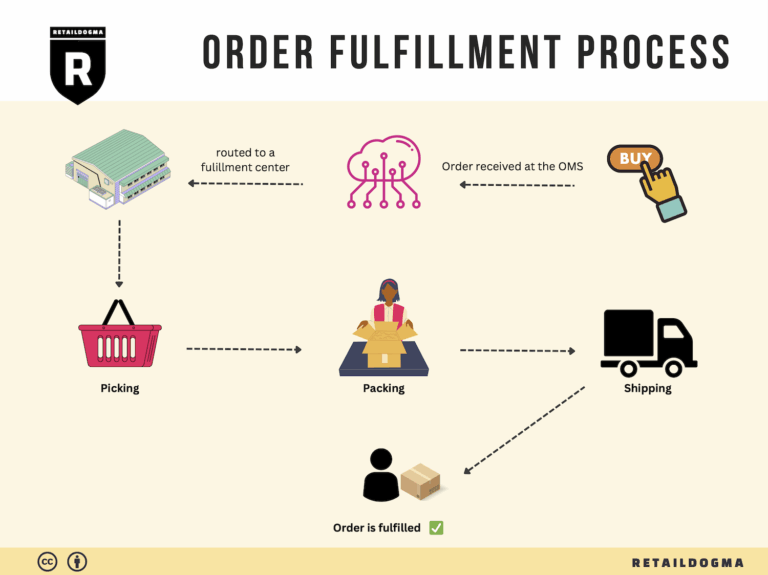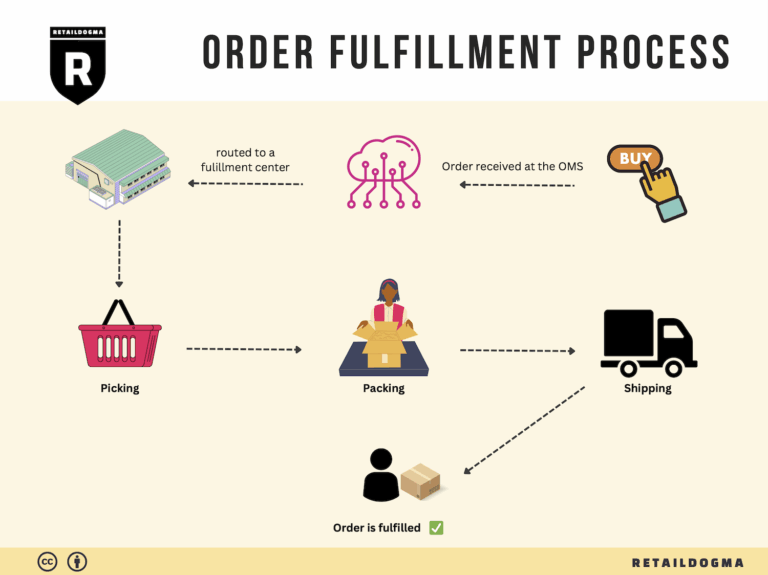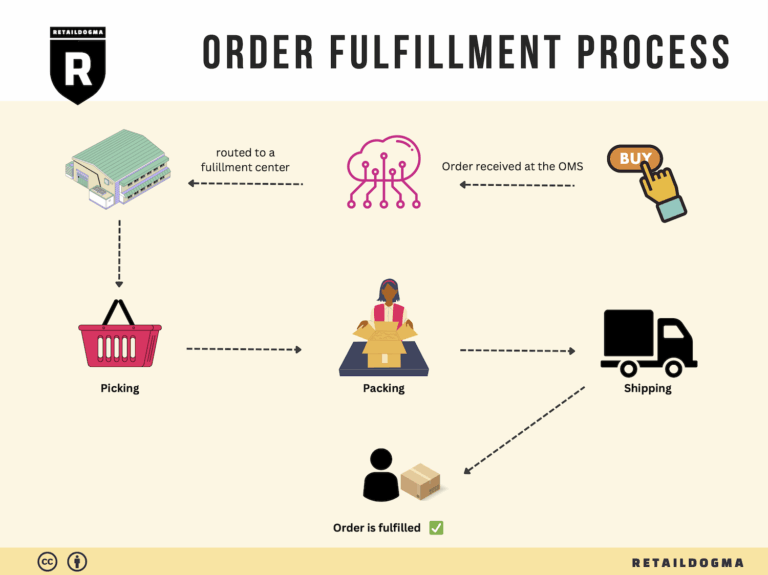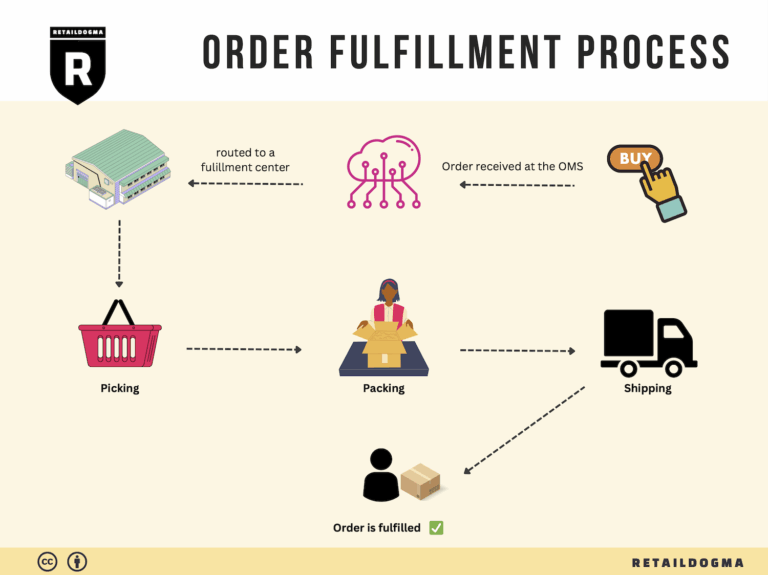What Is A Fulfillment Center? A Complete Guide (2025)
What is E-commerce Fulfillment? An Introduction for Growing Businesses
Understanding E-commerce Fulfillment
As an e-commerce business owner, you may find yourself grappling with the complexities of packing and shipping orders, especially as your sales begin to scale. The excitement of growing your business can quickly turn into overwhelm when faced with the logistical challenges of fulfilling orders efficiently and accurately. This is where e-commerce fulfillment comes into play—a crucial process that ensures your products reach customers in a timely manner.
At its core, e-commerce fulfillment is the end-to-end process of getting a product from your warehouse to your customer’s doorstep. This involves several key steps: receiving inventory, storing products, picking and packing orders, and shipping them out. However, as your business grows, managing these tasks can become cumbersome and distracting, pulling your focus away from core business activities like product development and marketing.
In this guide, we will explore various fulfillment models that can help streamline your operations. You’ll learn about Third-Party Logistics (3PL), which allows you to outsource your fulfillment needs, and Fulfilled by Amazon (FBA), a service that lets Amazon handle storage, packing, and shipping on your behalf. Each model has its unique advantages, and understanding these can help you make informed choices as your business scales.
We will also delve into the core services offered by fulfillment partners, including inventory management, order tracking, and customer service support. Knowing what to expect from a fulfillment provider can help you select the right partner for your specific needs.
Moreover, we’ll cover essential factors to consider when choosing a fulfillment partner, such as their technology capabilities, shipping options, and customer support. Pricing is another critical element, and we’ll provide insights on how to evaluate costs effectively to ensure you’re maximizing your investment.
The ultimate goal of this guide is to empower you, the business owner, to make smart and strategic decisions regarding your logistics operations. By understanding the fundamentals of e-commerce fulfillment, you can enhance your operational efficiency, improve customer satisfaction, and drive your business growth. Whether you’re just starting or looking to refine your existing processes, this guide will serve as a valuable resource in navigating the world of e-commerce fulfillment.
What You’ll Learn In This Guide
- What is E-commerce Fulfillment? An Introduction for Growing Businesses
- The Order Fulfillment Process: From ‘Buy’ Button to Customer’s Door
- Comparing Fulfillment Models: In-House vs. 3PL vs. Dropshipping
- A Deep Dive into Amazon FBA: Pros, Cons, and Who It’s For
- Core Services Offered by Fulfillment Centers
- How to Choose a Fulfillment Partner: A 6-Point Checklist
- Understanding Fulfillment Pricing: A Breakdown of Common Fees
- Frequently Asked Questions (FAQs) about Fulfillment
- Conclusion: Is Outsourcing Fulfillment the Right Move for Your Business?
- Important Disclaimer
The Order Fulfillment Process: From ‘Buy’ Button to Customer’s Door
1. Receiving Inventory
The first step in the order fulfillment process is receiving inventory, which involves the acceptance and logging of products into the warehouse. When a supplier sends products, the fulfillment center must inspect the shipment for accuracy and damage. Each item is assigned a Stock Keeping Unit (SKU), a unique identifier that allows for efficient tracking and management of inventory.
This step is crucial because it sets the foundation for the entire fulfillment process. Properly receiving and documenting inventory helps prevent discrepancies later on and ensures that the products are ready for storage and order fulfillment. Efficient inventory management practices here contribute to smoother operations downstream and minimize the risk of stockouts or excess inventory.
2. Warehouse Storage
Once inventory is received and logged, the next step is warehouse storage. Products are organized in a systematic manner, often categorized by type, size, or sales frequency. The layout of the warehouse is designed to maximize efficiency, allowing for quick access to items. Warehouse Management Systems (WMS) play a critical role in this process, as they track the location of each SKU within the facility.
Effective storage is vital for streamlining the order fulfillment process. By optimizing warehouse layout and storage methods, businesses can reduce the time it takes to locate items when orders come in. This efficiency translates into faster order processing times, which is essential for meeting customer expectations, especially in today’s e-commerce landscape where speed is paramount.
3. Order Picking
Order picking is the process where items are selected from the warehouse to fulfill a customer’s order. When an order is placed, a pick list is generated, detailing the SKUs and quantities needed. Warehouse staff use this list to locate and retrieve the items, which can be done manually or with the help of automated systems like pick-to-light or robotic picking solutions.
This step is critical as it directly impacts the accuracy and speed of order fulfillment. Errors during picking can lead to customer dissatisfaction and increased return rates. Therefore, employing efficient picking methods and regularly training staff on best practices can significantly enhance overall operational performance.
4. Order Packing
After items are picked, they move to the order packing stage. In this step, products are carefully packaged to ensure they arrive at the customer’s location in perfect condition. Packing stations are equipped with materials such as boxes, bubble wrap, and tape, along with systems for weighing and labeling packages. Quality control checks are also essential at this stage to verify that the correct items are packed.
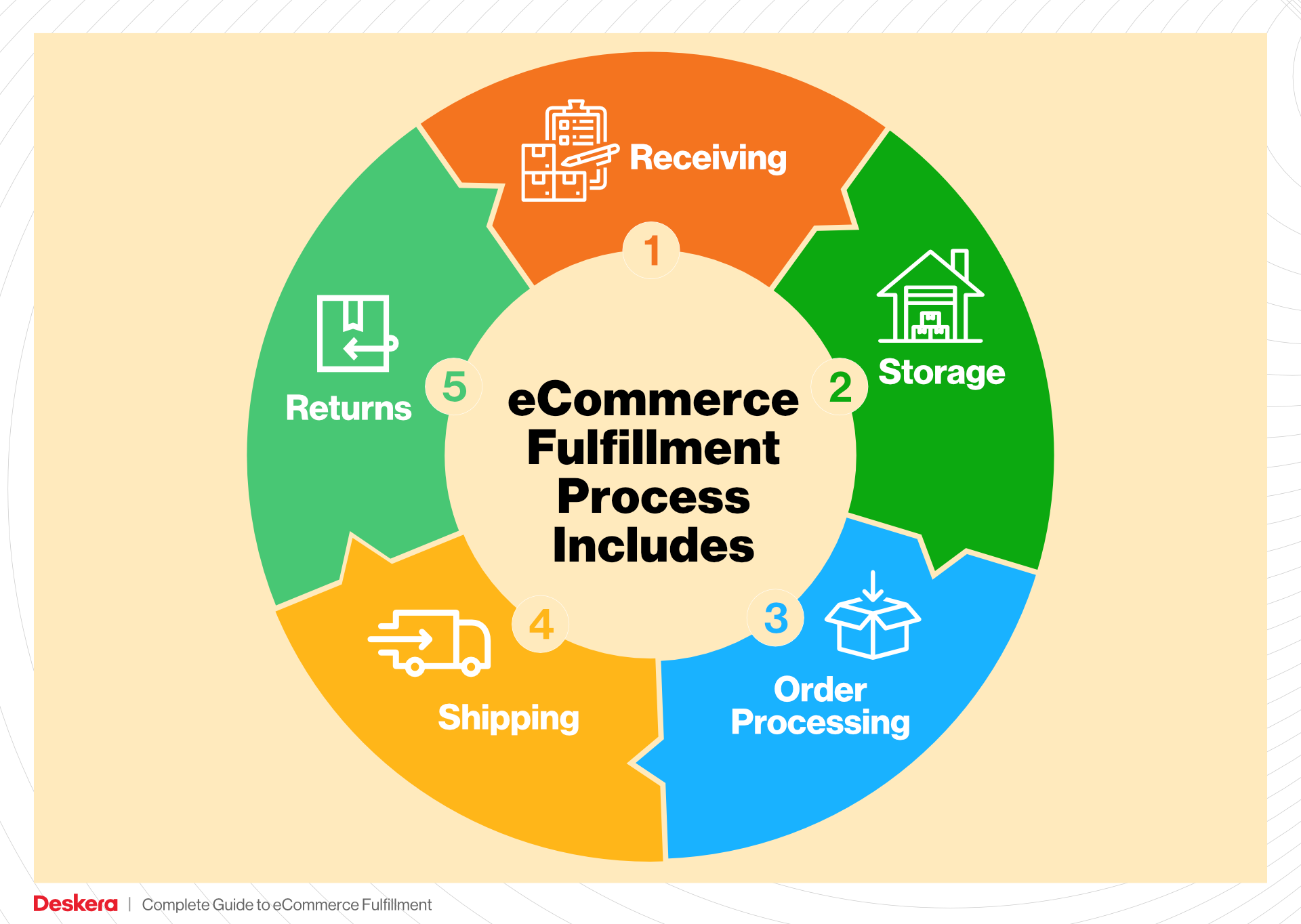
Packing is important not only for protecting the product but also for branding and customer experience. Thoughtful packaging can enhance the unboxing experience, which is an increasingly important factor for e-commerce customers. Efficient packing processes can reduce shipping costs and improve delivery speed, making it a key area for businesses looking to scale effectively.
5. Shipping & Delivery
The final step in the order fulfillment process is shipping and delivery. Once orders are packed, they are labeled and handed over to shipping carriers for delivery. Businesses must choose the right shipping methods and carriers based on factors like cost, speed, and reliability. Real-time tracking systems allow both businesses and customers to monitor the shipment’s progress.
Shipping is a critical component as it directly affects customer satisfaction and retention. Fast and reliable shipping can differentiate a business in a competitive marketplace. To optimize this step, businesses should explore partnerships with multiple carriers, utilize fulfillment networks, and continuously analyze shipping performance to ensure they are meeting customer expectations while controlling costs.
By carefully managing each of these five steps in the order fulfillment process, e-commerce businesses can improve efficiency, reduce costs, and ultimately enhance customer satisfaction, positioning themselves for growth in a competitive landscape.
Comparing Fulfillment Models: In-House vs. 3PL vs. Dropshipping
Fulfillment Models Overview
When scaling an e-commerce business, choosing the right fulfillment model is crucial. Each model has its unique characteristics, benefits, and challenges. Below is a comparison of three primary fulfillment models: In-House Fulfillment, Third-Party Logistics (3PL), and Dropshipping.
| Model | Who Handles Inventory | Best For (Business Stage) | Key Advantage | Key Disadvantage |
|---|---|---|---|---|
| In-House Fulfillment | Business itself | Established businesses | Full control over inventory and processes | High overhead costs and resource-intensive |
| Third-Party Logistics (3PL) | Third-party provider | Growth-stage businesses | Cost-effective and scalable solutions | Less control over inventory and processes |
| Dropshipping | Supplier/vendor | Startups and small businesses | Low upfront investment and no inventory risk | Lower profit margins and longer shipping times |
In-House Fulfillment
In-house fulfillment involves managing the entire logistics process internally. This model is best suited for established businesses that have the resources to handle their warehousing, order processing, and shipping. Companies that opt for in-house fulfillment maintain complete control over their inventory, allowing for tailored processes that align with their brand and customer service standards.
The key advantage of in-house fulfillment is the ability to oversee every aspect of the operation. Businesses can customize their processes, packaging, and shipping methods to enhance customer experience. Additionally, having direct access to inventory allows for rapid response to demand fluctuations. However, this model comes with significant drawbacks, including high overhead costs associated with warehousing, labor, and technology. As the business grows, the complexity and resource demands of in-house fulfillment can become overwhelming, making it challenging to scale efficiently.
Third-Party Logistics (3PL)
Third-party logistics (3PL) providers manage logistics and fulfillment on behalf of e-commerce businesses. This model is ideal for growth-stage companies looking to scale their operations without the burden of managing logistics themselves. 3PL providers offer a range of services, including warehousing, order processing, inventory management, and shipping, allowing businesses to focus on core competencies such as product development and marketing.
One of the primary advantages of using a 3PL is cost-effectiveness. By outsourcing fulfillment, businesses can save on overhead costs associated with maintaining their own warehouses and logistics teams. Additionally, 3PLs often have established shipping networks that can lead to faster delivery times and lower shipping rates. However, the downside is that businesses relinquish some control over their inventory and fulfillment processes, which can lead to inconsistencies in order accuracy and customer experience. It’s essential for businesses to choose a reputable 3PL provider that aligns with their operational standards and goals.
Dropshipping
Dropshipping is a fulfillment model where the retailer does not hold inventory but instead relies on suppliers to ship products directly to customers. This model is particularly appealing for startups and small businesses due to its low upfront investment and reduced risk associated with unsold inventory. Retailers only pay for products after they have made a sale, which minimizes financial exposure.
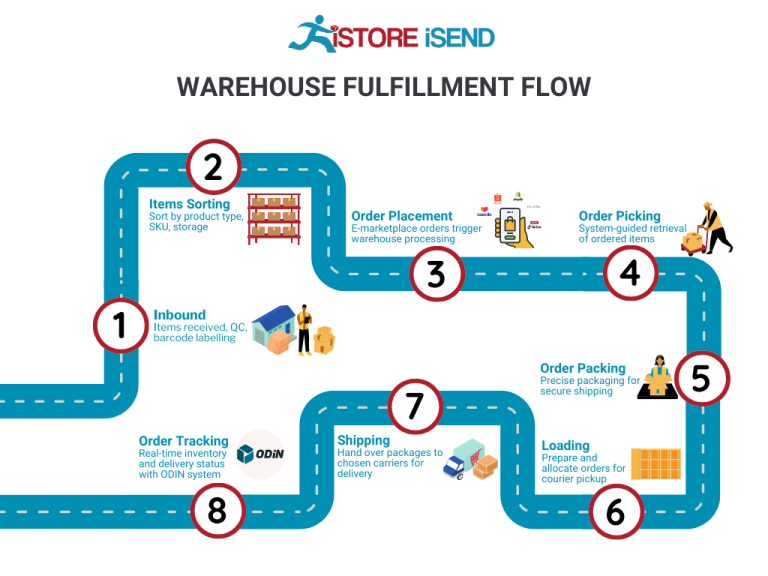
The main advantage of dropshipping is the ability to operate without the need for a physical warehouse or inventory management. This flexibility allows businesses to offer a wide range of products without the complexities of stock management. However, dropshipping also presents significant challenges, including lower profit margins due to reliance on suppliers and potentially longer shipping times, which can impact customer satisfaction. Additionally, since the retailer has limited control over the fulfillment process, any issues with the supplier can directly affect the retailer’s reputation.
Conclusion
Choosing the right fulfillment model depends on various factors, including the stage of your business, available resources, and long-term growth goals. In-house fulfillment offers control but at a higher cost, while 3PL provides a scalable solution with some loss of oversight. Dropshipping presents an accessible entry point for new businesses but may come with trade-offs in profitability and customer experience. Understanding these models allows e-commerce business owners to make informed decisions that align with their operational needs and growth aspirations.
A Deep Dive into Amazon FBA: Pros, Cons, and Who It’s For
Understanding Fulfillment by Amazon (FBA)
Fulfillment by Amazon (FBA) is a service offered by Amazon that allows e-commerce sellers to store their products in Amazon’s fulfillment centers. Amazon then takes care of storage, packaging, shipping, and customer service for these products. This service enables sellers to leverage Amazon’s extensive logistics network and customer base, making it an attractive option for many e-commerce entrepreneurs.
How FBA Works
-
Product Listing: Sellers create product listings on Amazon’s platform, specifying details such as pricing, descriptions, and images.
-
Inventory Shipment: Sellers send their inventory to Amazon’s fulfillment centers. Depending on the seller’s preferences and the products offered, they can choose to send all inventory to a single center or distribute it across multiple locations.
-
Order Processing: When a customer places an order for a product fulfilled by Amazon, the order is automatically processed by Amazon. This includes picking, packing, and shipping the product directly to the customer.
-
Customer Service: Amazon handles all customer service inquiries and returns for FBA orders, allowing sellers to focus on other aspects of their business.
-
Sales and Reporting: Sellers can access detailed reports on sales, inventory, and performance metrics via Amazon Seller Central, helping them make informed business decisions.
Pros of Using FBA
-
Prime Eligibility: Products fulfilled through FBA are eligible for Amazon Prime, which can significantly increase visibility and sales. Prime members are more likely to purchase items that offer fast, free shipping.
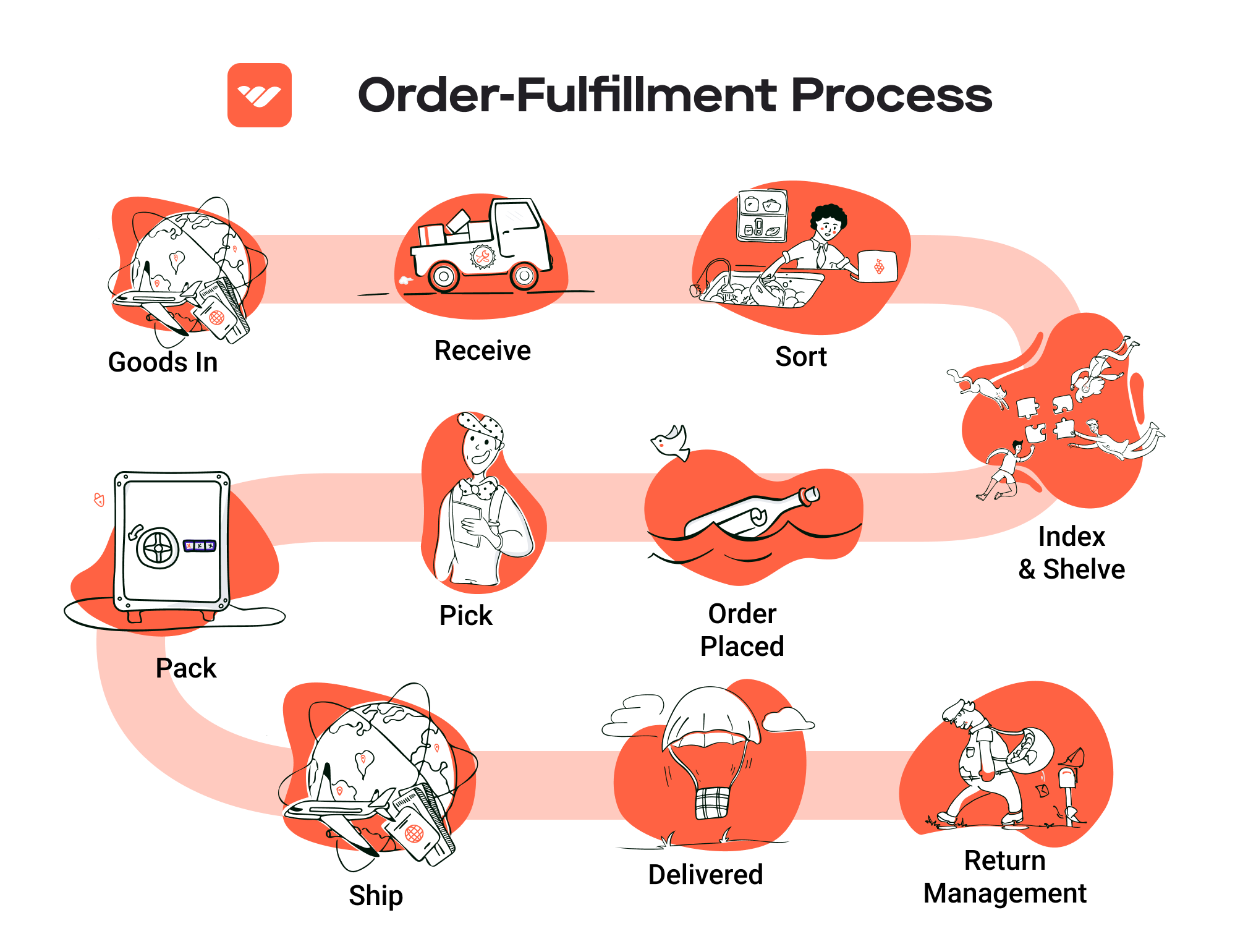
-
Customer Trust: By using FBA, sellers benefit from Amazon’s established reputation for reliability and customer service. This trust can lead to higher conversion rates and repeat business.
-
Multi-Channel Fulfillment: FBA allows sellers to fulfill orders from other sales channels, such as eBay or their own websites, using Amazon’s logistics. This flexibility can streamline operations and reduce overhead costs.
-
Scalability: As businesses grow, FBA can accommodate increased order volumes without the need for sellers to invest in their own warehousing or logistics infrastructure.
-
Time Savings: FBA automates many of the time-consuming aspects of order fulfillment, allowing sellers to concentrate on product development, marketing, and customer engagement.
Cons of Using FBA
-
High Fees: FBA services come with various fees, including storage fees for holding inventory and fulfillment fees for each unit shipped. These costs can add up, especially for low-margin products.
-
Strict Inventory Rules: Amazon has stringent guidelines regarding inventory management, including rules about labeling, packaging, and storage limits. Non-compliance can lead to additional fees or penalties.
-
Commingling Risks: In FBA, products from multiple sellers may be stored together, which can pose risks. If a customer receives a damaged or defective item, it can harm the seller’s reputation, even if the issue originated from another seller’s inventory.
-
Limited Control: Sellers have limited control over the fulfillment process. For instance, they cannot dictate how products are packaged or branded, which can affect the overall customer experience.
-
Variable Shipping Times: Although Amazon strives for fast shipping, delivery times can vary depending on the fulfillment center’s location and the shipping method chosen by the customer.
Who is FBA Best For?
FBA is an excellent option for various types of sellers, particularly:
-
New Entrepreneurs: Those starting their e-commerce journey can benefit from Amazon’s infrastructure, allowing them to focus on product sourcing and marketing without worrying about logistics.
-
Small to Medium-Sized Businesses: Companies that lack the resources to manage their own warehousing and shipping can leverage FBA to scale their operations.
-
Brands with High Demand: Sellers with established products that see consistent demand can maximize the benefits of FBA through Prime eligibility and improved customer trust.
-
Multi-Channel Sellers: Businesses that sell across multiple platforms can streamline their operations by using FBA to handle logistics for all sales channels.
-
Sellers of Seasonal Products: Those with fluctuating inventory needs can take advantage of FBA’s scalability, ramping up during peak seasons without the burden of long-term warehousing.
Conclusion
Fulfillment by Amazon provides a powerful solution for e-commerce sellers looking to streamline their logistics and enhance their customer service. While there are notable advantages, such as Prime eligibility and customer trust, there are also challenges, including high fees and strict inventory management rules. Ultimately, FBA is best suited for sellers who can effectively navigate these challenges while leveraging the extensive benefits of Amazon’s fulfillment network. As your business grows, evaluating whether FBA aligns with your operational goals and customer expectations will be crucial for sustainable success.
Core Services Offered by Fulfillment Centers
Inventory Management & Warehousing
Inventory management and warehousing are foundational services provided by fulfillment centers, crucial for e-commerce businesses looking to scale efficiently. This service involves the systematic storage of products in a secure environment, often with advanced inventory tracking systems that monitor stock levels in real-time. Fulfillment centers utilize technology such as RFID and barcode scanning to ensure accurate inventory counts and minimize discrepancies.
The benefit of effective inventory management is twofold. First, it reduces the risk of stockouts and overstock situations, which can lead to lost sales or increased holding costs, respectively. Second, it provides e-commerce businesses with valuable insights into sales trends and inventory turnover rates. This data allows for better forecasting and purchasing decisions, ultimately leading to improved cash flow and operational efficiency. By outsourcing inventory management to a fulfillment center, businesses can focus on their core competencies, such as product development and marketing, rather than the complexities of logistics.
Pick and Pack Services
Pick and pack services refer to the process of selecting products from the warehouse shelves (picking) and preparing them for shipment (packing). Fulfillment centers employ trained staff and optimized workflows to ensure that orders are picked accurately and packed securely. This process often includes quality checks to ensure that the right items are shipped in the correct quantities and conditions.
The primary advantage of pick and pack services is the speed and accuracy they bring to order fulfillment. In the competitive landscape of e-commerce, customers expect fast shipping times and accurate orders. By leveraging a fulfillment center’s expertise, businesses can significantly reduce order processing times, often shipping same-day or next-day. This not only enhances customer satisfaction but also fosters brand loyalty, as customers are more likely to return to a retailer that delivers on its promises. Furthermore, professional packing can improve the unboxing experience, reinforcing brand identity and increasing the likelihood of repeat purchases.
Kitting and Assembly
Kitting and assembly services involve the grouping of multiple products into a single package or the assembly of products from various components before shipping. This service is particularly beneficial for businesses that offer subscription boxes, promotional bundles, or customizable products. Fulfillment centers can efficiently manage the assembly of these kits, ensuring that they are prepared to meet customer demand.
The benefits of kitting and assembly are significant. First, it allows e-commerce businesses to offer unique product combinations that can attract more customers and enhance sales opportunities. Second, it streamlines the fulfillment process by reducing the time spent on individual order fulfillment. When products are pre-assembled into kits, the pick and pack process is expedited, allowing for quicker turnaround times. This service also enables businesses to manage seasonal promotions or limited-time offers more effectively, as fulfillment centers can quickly assemble kits based on changing inventory and customer preferences.
Returns Management (Reverse Logistics)
Returns management, often referred to as reverse logistics, is a critical service offered by fulfillment centers that focuses on the handling of product returns. This process includes receiving returned items, inspecting them for damage or defects, restocking them if they are in sellable condition, and processing refunds or exchanges. Efficient returns management is essential for maintaining customer satisfaction and loyalty, as a smooth return process can significantly impact a customer’s perception of a brand.
The key benefit of effective returns management is the ability to minimize the negative impact of returns on the overall business operation. A streamlined return process can reduce costs associated with handling returns and improve inventory accuracy. Additionally, fulfillment centers often provide data on return reasons, which can help businesses identify product issues or areas for improvement. By utilizing a fulfillment center’s reverse logistics capabilities, e-commerce businesses can enhance their customer service offerings, reduce return-related losses, and ultimately foster a more loyal customer base.
Conclusion
In summary, fulfillment centers offer a range of core services that are integral to the success of e-commerce businesses. From inventory management and warehousing to pick and pack services, kitting and assembly, and returns management, these services provide the operational efficiency and expertise needed to scale effectively. By partnering with a fulfillment center, e-commerce businesses can focus on growth and innovation, leaving the complexities of logistics in capable hands.
How to Choose a Fulfillment Partner: A 6-Point Checklist
Location & Warehouse Network
Why It’s Important:
The geographical location of your fulfillment partner’s warehouses can significantly impact shipping times and costs. A partner with a well-distributed network of warehouses allows for faster delivery to your customers, which is crucial for maintaining competitive advantage in today’s e-commerce landscape.
Questions to Ask:
– Where are your warehouses located, and how does that align with my target customer base?
– Do you have the capability to ship internationally or to specific regions?
– How do you manage shipping logistics between multiple warehouses?
Technology & Integrations
Why It’s Important:
In the age of e-commerce, the technology used by your fulfillment partner can make or break your operational efficiency. A partner with robust technology solutions will provide real-time inventory tracking, order management systems, and seamless integrations with your existing e-commerce platforms (like Amazon, Shopify, etc.).
Questions to Ask:
– What technology do you use for order management and inventory tracking?
– Can your systems integrate with my current e-commerce platform?
– How do you handle system updates and maintenance? Will it affect my operations?
Specializations (e.g., Cold Storage, Oversized Items)
Why It’s Important:
Different products have unique storage and handling requirements. If you sell temperature-sensitive items or oversized products, finding a fulfillment partner with the appropriate capabilities is essential. A partner with specialized services can ensure compliance with safety regulations and product integrity.
Questions to Ask:
– Do you have specialized storage facilities (e.g., climate-controlled or oversized item storage)?
– What experience do you have with my specific type of product?
– How do you ensure compliance with industry-specific regulations?
Scalability & Capacity
Why It’s Important:
As your business grows, your fulfillment needs may change. A partner that can scale with you will save you the hassle of switching providers and minimize disruptions to your supply chain. Understanding their capacity to handle seasonal spikes or rapid growth is crucial for long-term planning.
Questions to Ask:
– What is your current fulfillment capacity, and how do you plan to scale?
– How do you handle peak seasons or unexpected surges in orders?
– Can you provide examples of how you have successfully scaled with other clients?
Pricing and Contracts
Why It’s Important:
Fulfillment costs can eat into your margins if not managed properly. Understanding the pricing structure and contract terms of your potential partner is vital to avoid hidden fees and ensure that you can budget effectively. Transparent pricing will also allow you to assess the cost-effectiveness of their services.
Questions to Ask:
– What is your pricing structure? Are there any hidden fees I should be aware of?
– How do you handle pricing for different types of products or services?
– What are the terms of your contract? Is there flexibility for renegotiation or cancellation?
Customer Support & Reviews
Why It’s Important:
The level of customer support provided by your fulfillment partner can significantly affect your business operations. Quick and effective communication can resolve issues swiftly and keep your supply chain running smoothly. Additionally, researching reviews can provide insights into their reliability and service quality.
Questions to Ask:
– What support channels do you offer (e.g., phone, email, chat)?
– How quickly can I expect responses to inquiries or issues?
– Can you provide references or testimonials from other clients?
Conclusion
Choosing the right fulfillment partner is a critical decision that can significantly affect your business’s scalability, efficiency, and customer satisfaction. By using this checklist, you can make a more informed decision that aligns with your operational needs and growth objectives. Always take the time to research and ask the right questions to ensure that your fulfillment partner can meet your unique requirements effectively.
Understanding Fulfillment Pricing: A Breakdown of Common Fees
Initial Setup Fees
Initial setup fees are one-time charges that cover the costs associated with onboarding a new client to a fulfillment center. These fees can vary significantly based on the provider and the complexity of the integration process. Typically, the setup fee may include:
- Account Setup: Creating and configuring your account within the fulfillment system.
- Integration Costs: Linking your e-commerce platform (such as Shopify or Amazon) with the fulfillment center’s software for seamless order processing.
- Training and Support: Initial training for your team on how to use the system and ongoing support setup.
These fees can range from a few hundred to several thousand dollars, depending on the fulfillment center’s technology and services. It’s essential to clarify what is included in these fees to avoid unexpected costs.
Receiving Fees
Receiving fees are charges applied when the fulfillment center accepts and processes your inventory. This fee covers the labor and handling required to unload, inspect, and store products upon arrival.
Factors influencing receiving fees include:
- Volume of Inventory: The more products you send, the higher the total receiving fee, although some centers may offer bulk discounts.
- Condition of Goods: If items require extra handling due to damage or special requirements, this may increase the fee.
- Special Handling: Items that need special care (e.g., fragile or oversized products) may incur additional charges.
Typically calculated per pallet or per item, receiving fees can range from $20 to $100 or more, depending on the fulfillment center’s pricing structure.
Storage Fees (per pallet/bin)
Storage fees are recurring charges that you incur for keeping your inventory at the fulfillment center. These fees are generally calculated on a monthly basis and can be structured in various ways:
- Per Pallet: Many fulfillment centers charge based on the number of pallets your goods occupy. This fee can range from $10 to $30 per pallet per month.
- Per Bin: If your items are stored in bins or shelves, some centers may charge based on the space occupied per bin, often calculated in cubic feet.
It’s crucial to monitor your inventory levels, as excess inventory can lead to higher storage fees. Additionally, some fulfillment centers may offer tiered pricing structures, where the cost per pallet decreases as your volume increases.
Pick & Pack Fees (per item/order)
Pick and pack fees are charged for the labor involved in retrieving products from storage and preparing them for shipment. This fee typically covers:
- Picking: Locating and retrieving the item from the warehouse.
- Packing: Packaging the item for shipment, including materials like boxes, tape, and cushioning.
Pick and pack fees can vary widely based on the fulfillment provider’s efficiency and the complexity of the orders. Common pricing models include:
- Per Item: A fixed fee per item picked and packed, usually ranging from $0.50 to $2.00.
- Per Order: A flat fee per order, which might be more economical for larger orders.
Understanding how these fees are structured can help you optimize your inventory and order management processes.
Shipping Fees
Shipping fees are the charges associated with delivering the packaged goods to your customers. These fees are influenced by several factors:
- Shipping Method: Different carriers (e.g., USPS, UPS, FedEx) have varying rates based on speed and service level (standard, expedited, etc.).
- Weight and Dimensions: Heavier and larger packages typically incur higher shipping costs.
- Destination: Shipping to remote locations may attract additional surcharges.
Fulfillment centers may offer discounted shipping rates due to their volume agreements with carriers. Understanding the shipping fee structure is vital for pricing your products competitively while maintaining profitability.
Conclusion: Tips for Getting an Accurate Quote
To ensure you receive an accurate quote from a fulfillment center, consider the following tips:
- Clarify Your Needs: Provide detailed information about your inventory, order volume, and specific fulfillment requirements.
- Request Itemized Pricing: Ask for a breakdown of all fees, including setup, receiving, storage, pick & pack, and shipping.
- Compare Multiple Providers: Get quotes from several fulfillment centers to understand the market rates and services offered.
- Consider Additional Services: Inquire about any additional services (e.g., returns management, custom packaging) that may be beneficial for your business.
- Negotiate Terms: Don’t hesitate to negotiate terms, especially if you plan to scale your business and expect to increase your order volume significantly.
By understanding these common fulfillment pricing models and how they are calculated, you can make informed decisions that will help your e-commerce business scale efficiently and effectively.
Frequently Asked Questions (FAQs) about Fulfillment
1. What is the Amazon Fulfillment Center in Fort Worth, TX?
The Amazon Fulfillment Center in Fort Worth, TX, is a large-scale warehouse facility that specializes in the storage, organization, and shipping of a diverse array of products for Amazon. This center plays a crucial role in ensuring timely delivery and maintaining Amazon’s reputation for fast and reliable service across the region.
2. How does the fulfillment process work at Amazon?
The fulfillment process at Amazon involves several key steps: First, products are stored in the fulfillment center. When a customer places an order, the system automatically identifies the nearest fulfillment center with the product in stock. The items are then picked, packed, and shipped directly to the customer, often on the same day, ensuring quick delivery.
3. What’s the difference between a warehouse and a fulfillment center?
While both warehouses and fulfillment centers store products, their functions differ significantly. Warehouses primarily focus on inventory storage and may not handle the shipping process. In contrast, fulfillment centers are designed to manage the complete order fulfillment process, including picking, packing, and shipping products directly to customers.
4. What is a 3PL (Third-Party Logistics) provider?
A 3PL provider is a company that offers outsourced logistics services, which can include warehousing, fulfillment, and shipping. By partnering with a 3PL, e-commerce businesses can streamline their operations and focus on core activities such as marketing and product development, while the 3PL manages the logistics.
5. How much do fulfillment services cost?
Fulfillment service costs can vary widely based on factors such as order volume, storage space required, and specific services needed (like packaging and shipping). On average, businesses can expect to pay a combination of storage fees, picking and packing fees, and shipping costs. It’s advisable to obtain quotes from multiple fulfillment providers to compare rates.
6. What are the benefits of using an Amazon Fulfillment Center?
Utilizing an Amazon Fulfillment Center offers several advantages, including access to Amazon’s extensive logistics network, faster shipping times, and the ability to offer Prime eligibility for products. Additionally, it allows businesses to scale their operations without investing heavily in their own warehousing and logistics infrastructure.
7. Can I integrate my e-commerce store with Amazon Fulfillment?
Yes, Amazon provides tools and APIs that allow e-commerce businesses to integrate their online stores with Amazon Fulfillment. This integration enables seamless order processing, inventory management, and tracking, making it easier to manage sales across multiple platforms.
8. What types of products can be fulfilled through the Fort Worth center?
The Fort Worth Amazon Fulfillment Center handles a wide range of products, from consumer electronics and household goods to clothing and toys. However, certain restrictions may apply to specific categories, such as hazardous materials or perishable goods. It’s essential to check Amazon’s guidelines for product eligibility.
9. How can I ensure my products are stored correctly at the fulfillment center?
To ensure proper storage of your products at an Amazon Fulfillment Center, it is crucial to follow Amazon’s packaging and labeling guidelines. This includes using appropriate packaging materials and ensuring that items are labeled correctly for efficient identification and handling. Regular communication with Amazon’s support team can also help address any concerns.
10. What should I consider when choosing a fulfillment partner?
When selecting a fulfillment partner, consider factors such as location, shipping speed, technology integration capabilities, customer service quality, and pricing structures. Additionally, assess their experience with your specific product types and their ability to scale with your business as it grows.
Conclusion: Is Outsourcing Fulfillment the Right Move for Your Business?
Evaluating the Benefits of Outsourcing Fulfillment
Outsourcing your fulfillment process can be a game-changer for e-commerce businesses aiming for growth and efficiency. By partnering with a fulfillment service, you can save precious time and resources that would otherwise be spent on managing logistics, warehousing, and shipping. This allows you to focus on what truly matters: scaling your sales and enhancing your product offerings.
One of the primary benefits of using a fulfillment service is scalability. As your business grows, so does the complexity of your operations. A reliable fulfillment partner can seamlessly accommodate spikes in order volume during peak seasons or promotional events, ensuring that your customers receive their orders on time without the need for you to invest in additional infrastructure. This flexibility is crucial for businesses looking to expand without the burdens of operational overhead.
Moreover, fulfillment centers bring expertise that can significantly enhance your logistics performance. With established processes and technology, these partners can optimize shipping routes, reduce delivery times, and improve order accuracy—factors that are vital for customer satisfaction and retention. They also offer insights and analytics that can help you refine your supply chain strategy.
However, not all fulfillment partners are created equal. It’s imperative to choose one that aligns with your business goals and understands your unique needs. A well-chosen partner will not only support your current operations but also be a catalyst for future growth.
Take Action: Audit Your Shipping Process
To determine if outsourcing fulfillment is the right next step for your business, conduct a thorough audit of your current shipping process. Evaluate your order volume, delivery times, and customer feedback. This analysis will help you identify inefficiencies and assess whether a fulfillment partner could provide a more streamlined, effective solution. Remember, the right logistics partner can set the stage for your success in the competitive e-commerce landscape.
Important Disclaimer
⚠️ Important Disclaimer
The information in this guide is for educational purposes. Fulfillment services, pricing, and platform features change frequently. Always conduct your own due diligence and consult with providers directly before making business decisions.
